Ruck Clubs Are Building Healthier Bodies—and Strong Communities
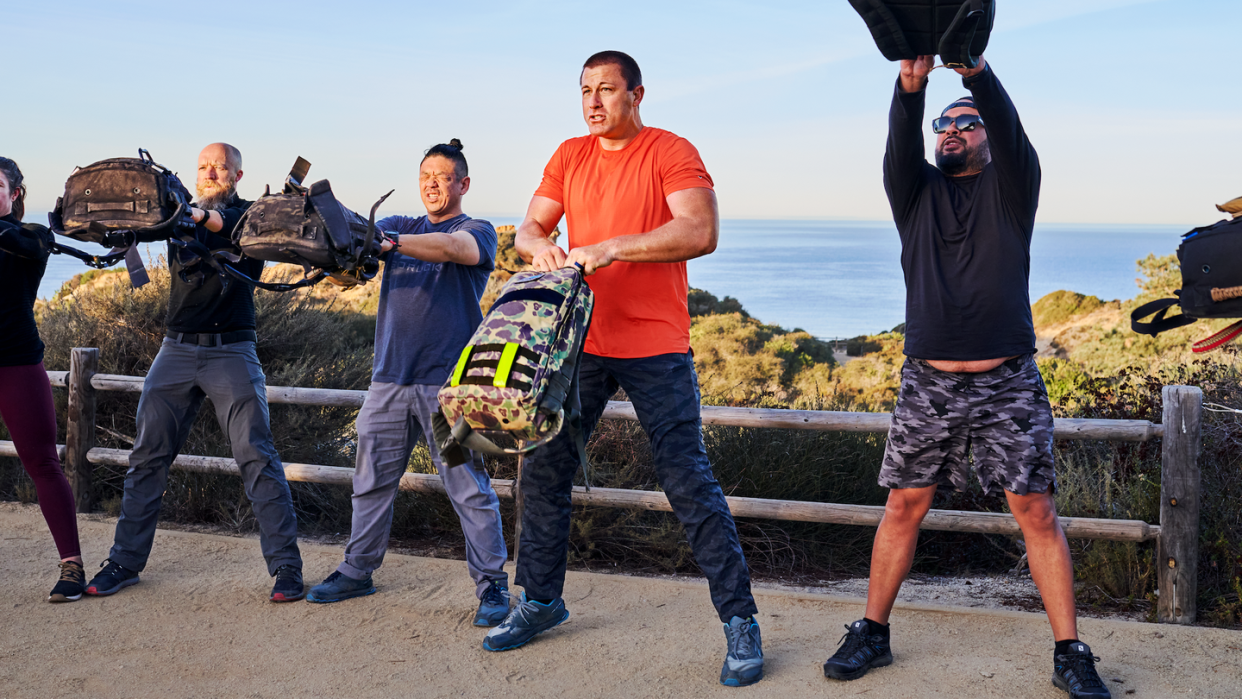
"Hearst Magazines and Yahoo may earn commission or revenue on some items through these links."
ONE MOMENT, THEY’RE hiking through Torrey Pines State Natural Reserve on a slightly chilly San Diego morning, rucksacks weighing an average of 30 to 40 pounds strapped tightly to their backs. The next, 15 or so members of the San Diego Triton Ruck Club are stopping and removing their packs, then holding them at chest height.
The group fans out along a small patch of flat ground overlooking the Pacific Ocean, and CJ Gotcher, a former Navy officer, begins a cadence. “Chest! Dip!” he barks. The ruckers lower into quarter squats. “Drive!” The ruckers thrust their packs overhead and yell, “One!” Gotcher continues, “Chest! Dip! Drive!” for ten reps.
It’s equal parts classic ruck and resistance-training session. And it’s workouts like this that are helping San Diego Triton revitalize rucking. Hiking long distances with a backpack strapped to your back can feel solitary, after all, and it’s long been seen as a military activity, making it intimidating to many.
But fitness clubs like San Diego Triton, which boasts more than 150 members, are changing that narrative, providing everyone with a road map that makes rucking fun. The backbone of that fun, says Jessica Flores, Triton’s founder, is in the power of the collective. “It’s an all-levels community of ruckers united in fitness through training and rucking,” she says of the club, founded in 2019. “Anybody can do a WOD at home, but a ruck club brings community.”
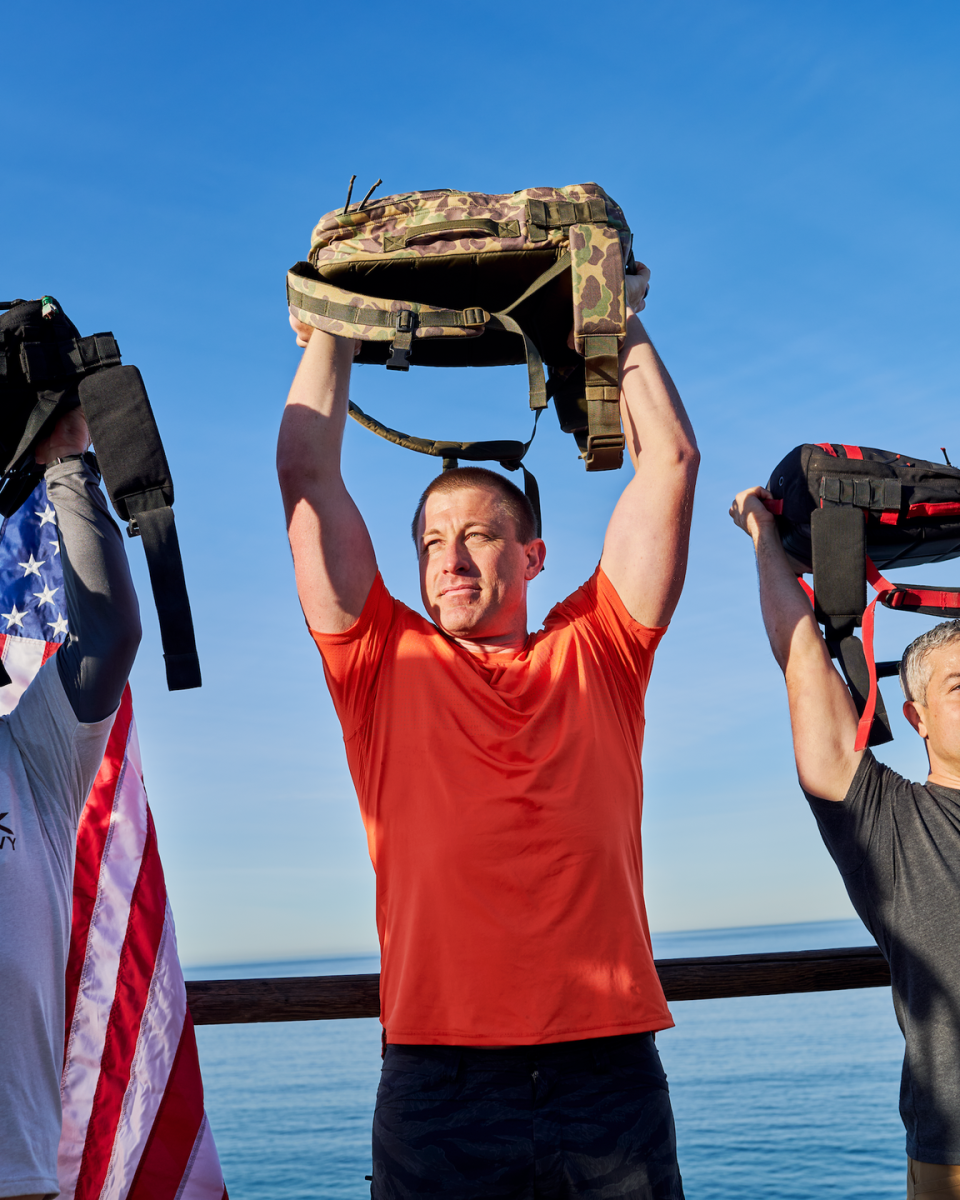
This trend is exploding across the country. The Triton Ruck Club is one of more than 500 clubs affiliated with Goruck, a rucking-equipment company that’s created more than 300 “challenge” events for 2024. These run the gamut from “basic” one-to-two-hour rucks that cover just a few miles (like this trek through Torrey Pines) to “heavy” rucks that can take 24 hours and cover 40 miles. Unlike with CrossFit or Hyrox competitions, there’s no emphasis on winning. Many events culminate in a patch on your rucksack, hugs, and a few beers.
This relaxed atmosphere attracted Flores back in 2019. A military brat, she was looking to inject more movement into a lifestyle that was too sedentary—but not do it alone. She initially recruited five coworkers for lunchtime walks.
After entering the Joggin’ for Frogmen 5K, she stumbled onto the concept of rucking. Flores loved how it blended strength, resilience, and cardio, while still allowing you to go at your own pace. “You’re going to burn calories faster than you would just walking,” she says, “and it doesn’t hurt as much as running. Oh yes!”
She started rucking with about six people on Tuesdays and Wednesdays, forming the Triton Ruck Club, then eventually added Thursday-afternoon rucks. “It’s really about word-of-mouth community, consistency, and engagement,” says Flores.
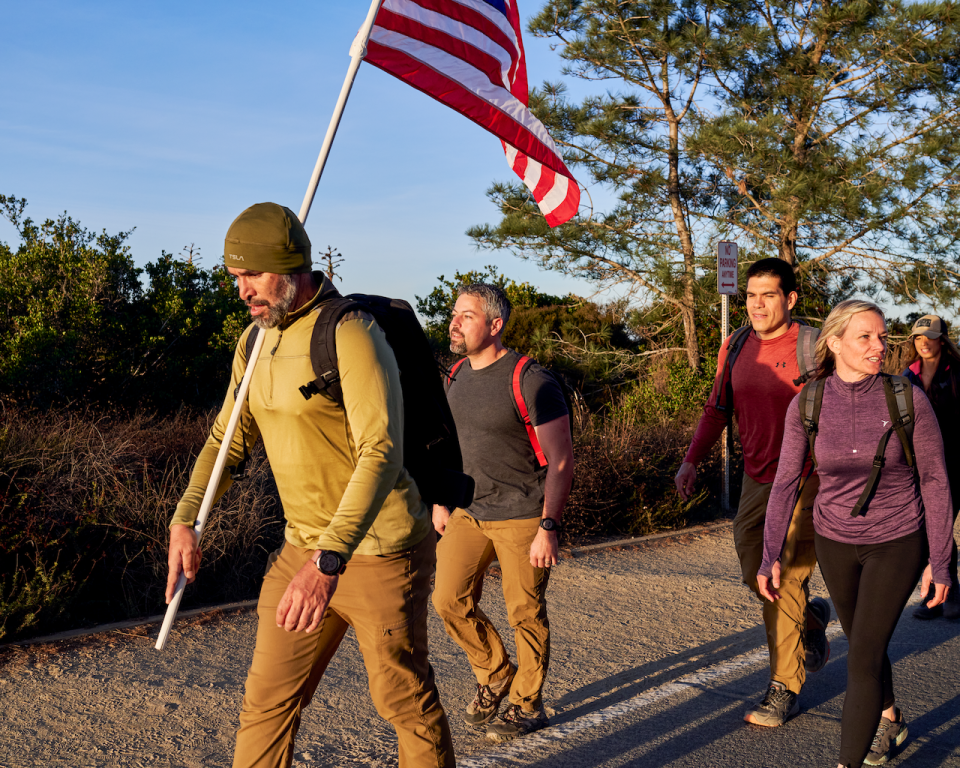
However you get started, rucking delivers a stealthy total-body workout. Like a hike, a ruck typically has you traversing varied terrain (great for building mobility and strength in your ankles and feet). The weighted pack provides a constant strength component, too, as your entire body takes each step with, on average, 30 to 40 extra pounds on your frame. (Aim to max out at one third of your bodyweight.) Your quads, glutes, and core muscles get pushed to their limits. “Rucking is a really good example of the intersection between conditioning and endurance,” says physical therapist Ben Fung, a longtime Triton member.
Triton rucks often add even more benefit by blending in basic strength-training moves. And that’s exactly what the ruckers in Torrey Pines are doing right now. After they finish their squat thrusters, the Triton ruckers walk another mile or so and remove their packs again, this time to swing them like kettlebells. Another 20 minutes (and about a mile) after that, there are pushups to be done.
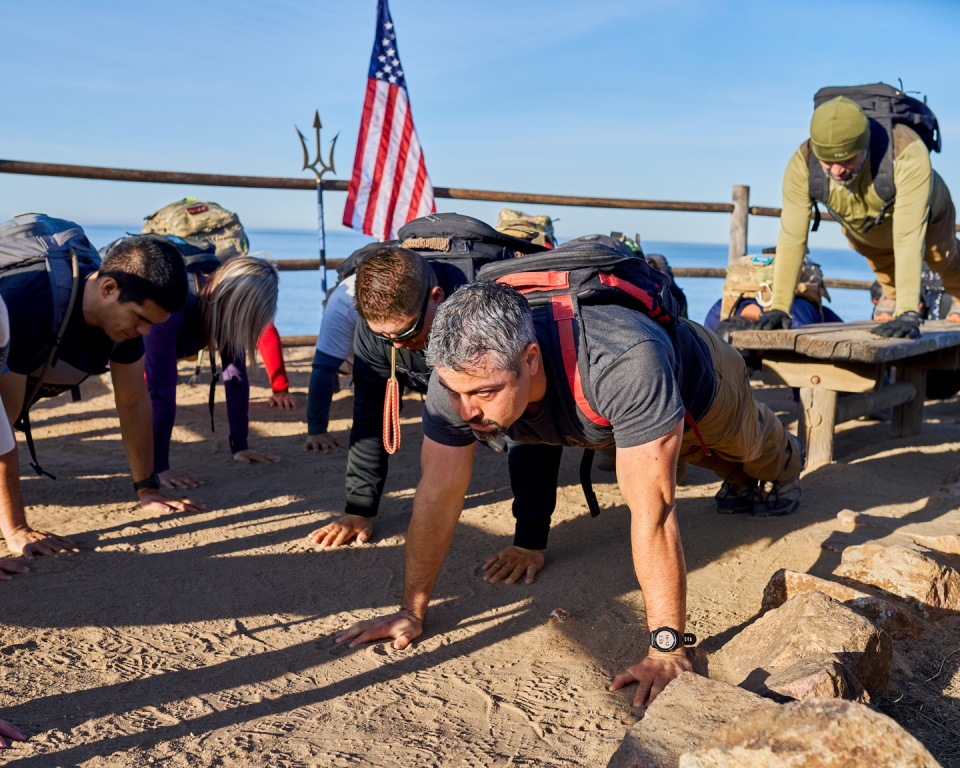
Through all those reps and steps, there are plenty of casual conversations. Rucking doesn’t leave you breathless like a set of kettlebell swings or the sprint workouts of high school football legend would.
That makes it accessible to just about everyone, including Alex Villagran, who joined Triton in 2019. He’d spent years playing video games and weighed 345 pounds. Five years later, he’s lost more than 100 pounds and seen his pants size shrink from 46 to 34.
His supportive rucking crew certainly helped. Rucking isn’t anything like a hardcore CrossFit box workout or gym-bro sesh, and you get a glimpse of that during this trek through Torrey Pines. With a half mile left, some in the group are lagging behind, and Villagran notices. “Half step!” he yells, and those near the front of the pack slow down. This allows the rest of the group to catch up. Remember: Rucking with Triton is about more than finishing first.
“Everyone starts,” says Villagran. “Everyone finishes.”
And everyone has a blast.
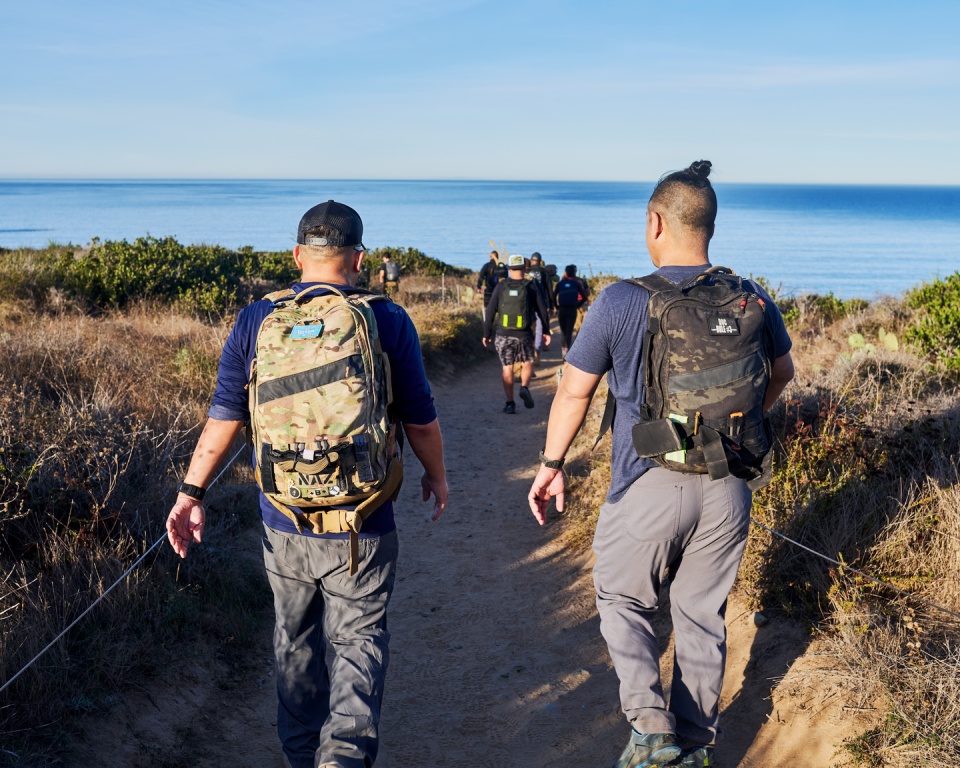
How to Set Up for the Perfect Ruck
AS SIMPLE AS rucking may be, you'll want to observe these nuances to get the most out of each outing.
High and Tight
If you’re using a rucksack, it’ll likely fit just right. But if you ruck with a backpack, use one that can sit high on your back. Put it on, then loosen the straps, says Goruck’s Nichele Cihlar. Bend over, tighten the straps, and stand. This pack position will help you prevent any lower-back strain.
Go Big (Foot)
Major Kate Nelson, who has completed the Nijmegen March, a four-day, 100-mile ruck held in the Netherlands each year, wears shoes a size too large for her long rucks. “You’re going to swell if you’re doing long distances,” she says.
Beat the Blisters
Blisters form when the material of your sock or shoe rubs against the skin. Avoid that by sticking with extra-tight socks. “I like long socks that are kind of tight on me,” says Nelson. “You’ve got to keep your feet dry and comfortable.”
How to Build Real Ruck Strength
ALL YOU NEED to start rucking is a path and a backpack you can fill with weight. (Think books or sand in gallon-size Ziplocs.) But if you want the full Triton experience, you’ll need to inject smart exercises into the action, too. Choose one of these moves every mile.
Push Press
Stand with your backpack at your chest, then push your butt back slightly and bend your knees. Explosively stand and squeeze your glutes, driving the pack over- head as you do. Lower it to your chest. That’s 1 rep; do 3 sets of 15.
Rucksack Swing
Place your pack on the ground about 2 feet in front of you, hands on the strap. Push your butt back and tighten your abs. This is the start. Now aggressively pull the pack between your legs. Stand quickly and squeeze your glutes, propelling the pack forward. As it begins to descend, push your butt back again for another rep. Do 3 sets of 20.
Resisted Pushup
The classic pushup gets extra load here. Get in pushup position, your pack on your back. Bend at the shoulders and elbows, lowering your chest to within an inch of the ground. Press back up. Do 3 sets of 15 reps. Can’t get all 15? Do as many as you can. Remove the pack and keep going until you’ve hit your reps.
This article originally appears in the March/April 2024 Issue issue of Men’s Health.
You Might Also Like

